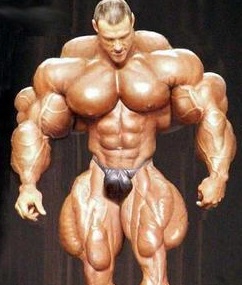Page created on October 15, 2018. Last updated on December 13, 2018 at 14:48
Hypertrophy is when cells increase in size, making the tissue bigger without cells dividing.
Why and where does hypertrophy happen? There are many causes to this, and some forms of hypertrophy can cause a lot of harm to the body, like in the left ventricle. A quick overview over the causes:
- Gainz at the gym
Increased functional demand will increase the size of individual muscle fibers. The protein synthesis and the number of myofilaments increase. In skeletal muscle, some hyperplasia is also present. - Chronic hemodynamic overload (hypertension)
- Same as pumping iron, but the cardiac myocytes get bigger.
- Hormones
E.g. Estrogen during pregnancy makes the smooth muscle cells in the uterus increase their protein synthesis, and therefore increase their size, making it possible to carry an embryo.
Hypertrophy happens in cells that don’t divide, like neurons, cardiac myocytes and other muscle tissue like smooth or skeletal muscle.
Mechanisms of hypertrophy
The mechanism is a mixture of actions of mechanical sensors, growth factors and vasoactive agents, and there are two biochemical pathways. The two pathways are the PIP3-kinase/Akt pathway and G-protein-coupled receptor pathway. Mechanical sensors get triggered by mechanical stimuli, like in exercise, and is considered a physiological way of hypertrophy. This will use the PIP3-kinase/Akt (Akt = PKB – Protein Kinase B) pathway of signaling.
Growth factors like TGF-β and Insulin-like growth factors (IGF) and vasoactive agents like endothelin and angiotensin II will use G-protein-coupled receptors. This hypertrophy will then be pathologic.
In normal muscle tissue in adults, myosin heavy chains are found as the α-type. In case of hypertrophy, the contractile myosin proteins will go from the α-type to the β-type, making the contractions slower. However, they will be more economical for the bigger cells.
β-type myosin is also found in neonates.
